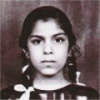 | Name: Bena
Overview: Bena was born in the Kigezi District of Uganda, the daughter of a wealthy businessman. She was diagnosed when nearly 12 and then shunned by children who thought diabetes was contagious. She lived on chapattis and spinach and a bitter vegetable juice thought to cure diabetes. When Idi Amin expelled Ugandan Asians in 1972, her family came to England, and she was delighted to be allowed to eat a wider range of food. She eventually married an Englishman and had two daughters. She works as an office administrator, in a social services department that supports disabled children.
There are also interviews with Bena`s daughter, Emma and her husband, Terry.
Hits=6 |
|
|  | Name: Shirley Jones
Overview: Shirley Jones` parents had little money to spend on food and she remembers eating bread and jam `many, many times`. She married at 19, divorced, married again at 21, and then her second husband left her to bring up two small children alone before she was diagnosed with diabetes, aged 32. She was recruited into the UK Prospective trial for Type 2 diabetes, but rapidly became insulin-dependent. Until recently, she ran a pub with her current partner. She is now on kidney dialysis.
Hits=5 |
|
|  | Name: Tas Bokhari
Overview: Tas Bokhari`s parents were wealthy landowners in India. As Muslims, they were forced to migrate to Pakistan in 1947 and many of his family were killed on the way. He was educated in a mission school and a college before moving to England in 1961. He married an English librarian in 1964 and has two children. After acquiring an HNC in Mechanical Engineering, he worked as a motorcycle inspector and design engineer and then ran a nursing home. He also had a part-time job at Edgbaston cricket ground and was well-known in Pakistan for his radio cricket commentaries.
Hits=4 |
|
|  | Name: Margaret Elliott
Overview: Margaret Elliott`s newly-qualified local doctor diagnosed diabetes as soon as he walked through her front door - from the smell of acetone. Her family was poor but managed to pay for some medical care through a thrift club. Her parents did her injections for her and her husband did them after she married at 20. She was advised not to have children, but had 3 normal births and one caesarean. She attributes her good health to her husband`s care and a very strict diet. She has smoked 6 or 7 cigarettes a day since she was 14.
Hits=4 |
|
|
 | Name: Gillian
Overview: Gillian was diagnosed when she was 23, while working as a
journalist in London. At the age of 26, a consultant advised her that if she
wanted children, it would be a good idea to have them soon, because "you`ve
got to consider whether you`re going to see them grow up". Her partner
didn`t want to be a father at that stage, so she decided to be a single
parent and has brought up two children on her own. Her daughter was
diagnosed with diabetes in 1999.
There is also an interview with Gillian`s son, Tom.
Hits=3 |
|
|  | Name: Margaret
Overview: Margaret developed pneumonia from living in a damp prefab and missed a lot of school. At 9 she attended an open-air school for sick children and was ostracised at secondary school because of her different background. She left at 15 with no qualifications, but earned more as a seamstress than her father did on the railways. She was diagnosed at 18 and married at 20. Her husband was in the RAF and she was treated in RAF hospitals. She has had serious hypos and many health problems, but enjoys making spectacular iced cakes and playing with her grandchildren.
Hits=3 |
|
|
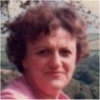 | Name: June Hill
Overview: June Hill had never eaten much sweet food and had always had plenty of exercise so her diagnosis brought little change and had no effect on her career as a teacher and then a nurse. She went on tablets in 1983, and was put on insulin in 1995, when she had a serious illness unconnected with diabetes. She took no interest in her own diabetes for many years until her diabetic mother became housebound. Then she began to inform herself about long-term implications. She is very fit and is enjoying her retirement.
There is also an interview with June Hill`s husband, Tony Hill
Hits=2 |
|
| 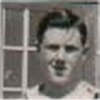 | Name: Ron Craythorne
Overview: Ron Craythorne worked all his life in the family business of carpentry and joinery but, when he retired, there was no-one to take over, so now he and his wife give shows for charity, showing people round the old workshop and selling the products of his woodturning. (He carved and painted the wooden fruit and bowls shown in his photo.) He has played team sports all his life and diabetes has caused him few problems. However, he knows of the problems it can cause, from members of the diabetic group he founded several years ago.
Hits=2 |
|
|
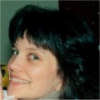 | Name: Julia
Overview: Julia was the first member of her family to go to university, and she taught in a primary school before specialising in teaching dance. Between her diagnosis in 1989 and the recording of this interview in 2004, she spent time in hospital for a variety of reasons, including the births of her three daughters. The biggest changes she noticed during these years were the increasing role of specialist nurses and also a shift to patient control: at first she was automatically put on a drip, whereas later the staff began to trust her to manage her own diabetes.
Hits=2 |
|
|  | Name: James Jones
Overview: James Jones left school at 14 and worked with his father as a groundsman before joining the RAF in the Second World War, then becoming a sheet metal worker. When he collapsed at the age of 48, his confused conversation led him to be taken to the Warneford mental hospital and he was given electric shock treatment before being diagnosed with diabetes. He was married to his childhood sweetheart for 52 years and has three daughters. He enjoys flying in gliders, and has an ambition to try wing-walking on top of a bi-plane!
Hits=2 |
|
|
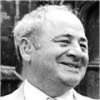 | Name: Colin Dexter
Overview: Colin Dexter was diagnosed in the same year that his Inspector Morse novels began to be shown on TV, after his wife recognised his symptoms and urged him to see his GP. He was admitted to hospital immediately and put on an insulin drip. He sometimes finds it a bother to take all his insulin and blood-testing equipment with him on his travels, but doesn`t otherwise allow diabetes to dominate his life. He continued to be a `very big drinker indeed` until 2004, when he gave up alcohol altogether.
Hits=2 |
|
|  | Name: Joanne Pinfield
Overview: Joanne Pinfield was only 5 when she had the frightening experience of waking from a coma in hospital and she has found diabetes frightening for much of her life. At school she felt isolated by being the only person with diabetes. She left at 16 to work in a pottery with a sympathetic boss who helped her not to feel ashamed of diabetes, but then reverted to hiding her condition during 12 years working in a factory. Her father`s death in 2001 prompted her to take better care of herself. She married in 2002 and runs a limousine business with her husband.
There are also interviews with Joanne`s mother, Mary Potter, and husband, Nick Pinfield.
Hits=2 |
|
|
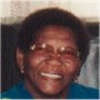 | Name: Agnes
Overview: Agnes` father worked in sugar cane fields in St. Kitts and her mother in the markets. Agnes worked as a maid until coming to England aged 22. She has been married twice and has five children. She controlled her diabetes with tablets, apart from a short spell on insulin while being treated for cancer. At the time of recording, she had recovered from cancer, but was about to go on insulin permanently. At 66, she still gets up at 4.30 every morning to work as a cleaning supervisor and mobile carer, and says her Christian faith sustains her.
Hits=2 |
|
| 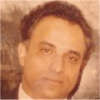 | Name: David
Overview: David`s father was a Fijian doctor whose work took him all round the Fiji islands. David himself managed a small post office before coming to England in 1959. His wife and baby son joined him later and they had six more children. He had converted from Methodism to his wife`s Catholicism and his children attended Catholic schools in Birmingham. He worked long hours to support them, as a telecommunications engineer, until he retired at the age of 60. He used to dream of returning to Fiji but now feels he couldn`t leave his children and grandchildren.
Hits=2 |
|
|
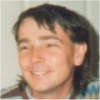 | Name: Philip Newick
Overview: Philip Newick comes from a working-class Bristol family which was greatly affected by redundancies in the aircraft industry. Determined to escape such insecurity, he did a degree and postgraduate work in chemical engineering. He worked for HJ Heinz until after diagnosis, when he was told that he could no longer work abroad. He then got a job nearer to his home in Birmingham and all his treatment has been in that city. He and his wife still weigh and measure all his food and he has few health problems - apart from an inability to detect the onset of hypos.
Hits=2 |
|
| 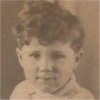 | Name: Allan Jones
Overview: Allan Jones` father was a miner with six children. They had little money but had to pay for insulin and equipment until the National Health Service was created in 1948. They couldn`t afford cotton wool and re-used needles until they were blunt. When Allan was 15 he got a job as a messenger on the railways but had to pass a medical before being promoted. He feared he would lose his job if his diabetes was discovered, so took with him a sample of his brother`s urine! He passed the medical and worked happily on the railways for 30 years.
Hits=2 |
|
|
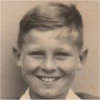 | Name: Ian Vokins
Overview: Ian Vokins was diagnosed shortly after leaving junior school and when he joined his secondary modern school, he was treated `like an alien` and fed dried apricots at every school dinner for 3 years! He was bullied throughout his school-days and left as soon as he could, aged 15. After that, life `seemed to open up` and he `started learning` while he worked as a technician in fields as diverse as atomic energy, cryogenics, orthotics, packaging, and space science. His work often took him abroad, and he says that diabetes hasn`t stopped him doing anything, apart from flying aeroplanes!
Hits=1 |
|
|  | Name: John Browning
Overview: John Browning`s father was an army officer and John always assumed that he would make his own career in the forces. He was diagnosed with diabetes at the age of 28, not long after getting married, and was invalided out of the army. He became a Conservative party agent and then a teacher. He still weighs his food and attributes his good health to his strict regime. He thinks one of the main improvements in his care has been to see the same specialist at each visit, instead of a different person every time.
Hits=1 |
|
|
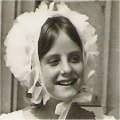 | Name: Harriet
Overview: Harriet was diagnosed when she was 12, and loved Great Ormond Street Hospital, where she was treated until she was 17. Her grammar school couldn`t cope with her diabetes, so she left at 15 to do O and A Levels elsewhere, and eventually gained a Diploma in Fine and Decorative Arts. She has worked for the Tate Gallery and for a company that bought art for corporations, and has also run her own business, and worked in college and university administration. Her daughter was diagnosed with diabetes at the age of 9.
There is also an interview with Harriet`s husband, Greg.
Hits=1 |
|
| 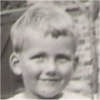 | Name: Francis Andrews
Overview: Dr. the Rev. Francis Andrews was diagnosed with diabetes on the day that war was declared in September 1939. He was the son of a doctor who`d worked as a medical officer in Flanders during the First World War. Francis also trained to be a doctor, and eventually became a consultant physician in rheumatology, having been advised not to specialise in diabetes. He married and has 6 children, 15 grandchildren and 1 great-grandchild, none of whom have diabetes. He took early retirement to train as a Catholic priest, and was ordained in 1994.
Hits=1 |
|
|
 | Name: Kushira Hackett
Overview: Kushira Hackett`s mother was white and her father black – from Guyana. Her parents split up when she was 5 and her mother later married a Jamaican. After diagnosis, the hospital staff explained to her mother about portions and gave her scales for weighing food, but gave no explanations to Kushira. Her mother also gave no explanations, and she thinks this led to her rebellion against diabetes, and to her leaving home aged 16. She had a period of homelessness, but later gained a law degree and now lives happily in Birmingham with her partner and two children.
Hits=1 |
|
| 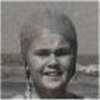 | Name: Victoria
Overview: Victoria`s father was a bank manager and she attended a private school and a grammar school. At 16, she developed an eating disorder after a boyfriend dropped her because she was diabetic, and at 25 she briefly rebelled against her diabetic diet. Otherwise, she feels diabetes has caused few problems and hasn`t prevented her from achieving her ambition of becoming a teacher. She thinks perhaps it did influence her not to have children, but she enjoys life with her partner, and is grateful for new blood testing equipment and other developments which have given diabetics greater freedom.
Hits=1 |
|
|
 | Name: Colin Gates
Overview: Colin Gates` father and 6 uncles were all butchers and Colin did a meat apprenticeship between leaving school and doing National Service. He worked as a butcher for 17 years then moved into security work; it was during a company health check that his diabetes was discovered. He later became an operating theatre orderly and won an award for his work before a stroke led to early retirement. He regards a subsequent quadruple heart bypass as `the best thing I have ever had done` and refuses to allow other health problems to stop his enjoyment of life.
Hits=1 |
|
|  | Name: Mr. Baghria
Overview: Mr. Baghria`s parents are Sikhs who came from India in the 1950s; his father worked as a galvaniser in a factory. His parents` aim was that he should have a good education, but his own dream was to become a truck driver. He married young and he and his wife saved to buy his HGV licence. Not long afterwards, he was diagnosed with diabetes and his licence was revoked. He appealed and managed to get it back, on condition that he had a yearly medical - and he has been driving all over Europe ever since.
Hits=1 |
|
|
 | Name: Leon Cowdery
Overview: When Leon Cowdery left school at 15, his diabetes barred him from his chosen profession of sign-writing because he was not allowed to go up a ladder. He worked as a cycle mechanic and then, in order to avoid going to his parents` Seventh-day Adventist church, he took up floor-laying at weekends. This led him into the building trade and he has been going up ladders ever since! He designed the house in which he lives and, now that he`s semi-retired, he helps his wife with gardening and maintains four motorbikes from the 1950s.
Hits=1 |
|
| 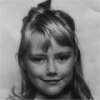 | Name: Clare
Overview: Clare was brought up in a remote Cornish hamlet. Although she developed Type 1 diabetes around the age of 5, she was not given insulin until about 4 years later and was instead kept on a near-starvation diet. She rebelled for many years and only began to take care of herself after she was registered blind in 1984. She went on to gain a second BA, MA and PhD and is now a university research fellow. She has been helped by coming to regard her lack of sight as `an issue around social equality as opposed to a medical issue`.
Hits=1 |
|
|
 | Name: Emma Cherry
Overview: By the time Emma Cherry was diagnosed in 1988, GPs were familiar with childhood diabetes; hospital children`s wards were used to dealing with it, and Emma remembers a wonderful diabetes specialist nurse who showed her how to inject herself, and later called at her home twice daily to supervise her early attempts. Her schools, university, and colleagues at work all accepted her without any fuss, and she has never been made to feel `different`. Injections and blood tests are such a routine part of her life that she wonders how she would cope with a cure!
There is also an interview with Emma`s mother, Zin Cherry.
Hits=1 |
|
| 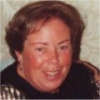 | Name: Christina
Overview: Christina`s parents came to Oxford from Eire in 1948 and she was brought up on an Irish diet of bacon, cabbage and potatoes. Her father worked in a car factory and her mother as a cook and cleaner. Christina went to a Catholic school until she was 15 and then started work folding paper at the University Press, where she met her husband. They married when she was 18 and had two sons. She worked as a cleaner in a private school for 31 years until registered blind in 2001, four years after being diagnosed with diabetes.
Hits=1 |
|
|
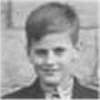 | Name: Peter
Overview: Peter`s father was a professor and both parents were well-informed about diabetes after his older brother was diagnosed in 1945. They spotted Peter`s symptoms early and at first he only needed four units of Lente insulin to last 24 hours. He was educated at Oxford and worked in the steel industry for several years. He is now a management consultant and has few problems associated with diabetes. He has recently remarried, after being widowed in 2003, and has a daughter with diabetes who is `much more able to cope with disturbances to her daily routine than I am`.
Hits=1 |
|
| 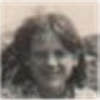 | Name: Mary
Overview: Mary`s father was a baker and her mother a factory worker. When she was diagnosed, the hospital suggested that they should buy a book on diabetes by R.D. Lawrence, but she doesn`t think they read it. She feels she was given very little information, and remembers thinking that her diabetes might disappear when she began to have periods at 15. She made little effort to control her diabetes until she went to a clinic in Oxford in 1983. She works as a podiatrist and reckons that about 75% of her patients have diabetes
Hits=1 |
|
|
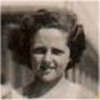 | Name: Ann
Overview: Ann came to England in 1945, and was diagnosed when the matron at her boarding school found her drinking the bath water. Her mother had worked as a nurse at Kings Hospital, London, and took her daughter there, to be treated by R.D. Lawrence (co-founder of the British Diabetes Association, now Diabetes UK). She has memories of being made to go into a hypo, of glass syringes, thick needles, and embarrassing urine tests. She worked as an occupational therapist, and brought up two children alone. Despite eyesight problems, she now makes a living as an artist.
Hits=1 |
|
|  | Name: Lisa McGregor
Overview: Lisa McGregor was diagnosed shortly before starting secondary school. She spent two weeks in hospital, where she learnt to inject herself from the outset. She was given a `traffic light` book, listing forbidden and permitted foods, but didn`t follow the diet strictly. She injected herself twice daily for 20 years until moving to a more flexible regime, with four injections, in 2003. She describes it as a DAFNE regime (Dose Adjustment for Normal Eating), but hasn`t attended a DAFNE training course. She has had few health problems, but several frightening experiences as a result of hypos.
Hits=1 |
|
|
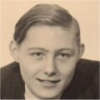 | Name: Patrick Grogan
Overview: Patrick Grogan was treated at King`s College Hospital by R.D. Lawrence (co-founder of the British Diabetes Association, now Diabetes UK) and he remembers Lawrence commenting on the amount of carbohydrate at a hospital Christmas party. He has always kept to a healthy diet, has had lots of exercise as a machine-tool fitter and maintenance worker, and has had no diabetic complications. He`s a member of NHS Concern and the West Midlands Pensioners Convention and says that taking an interest in improving society is what keeps him going.
Hits=1 |
|
|
| Search returned 62 matches |